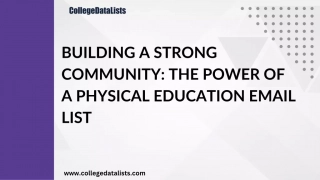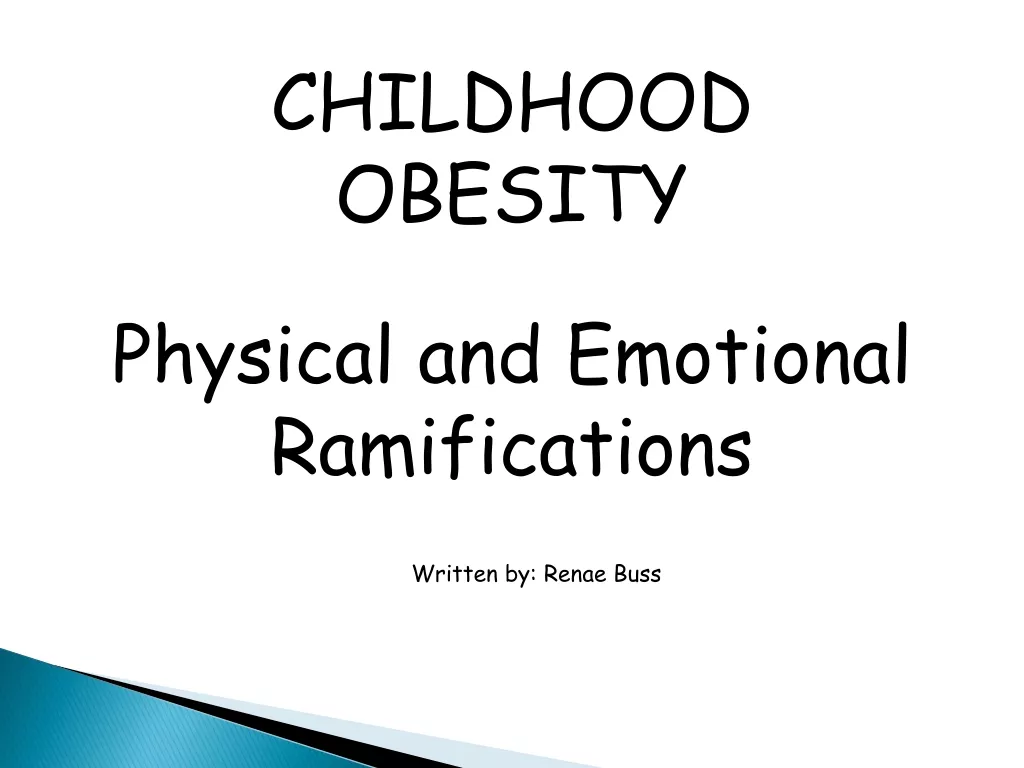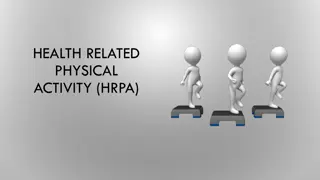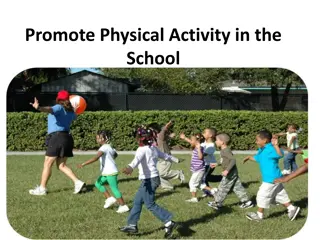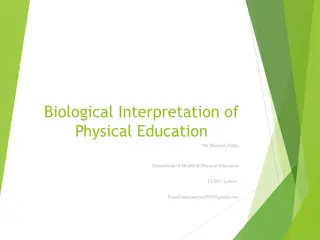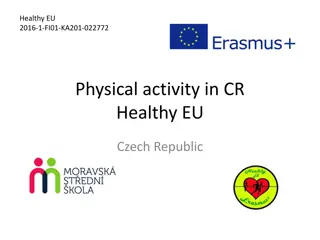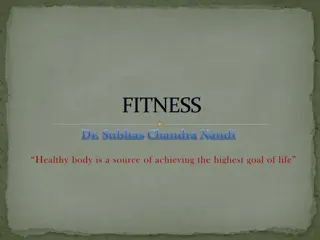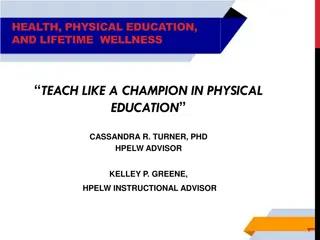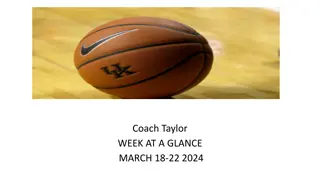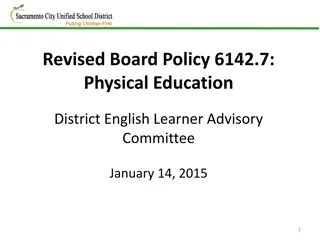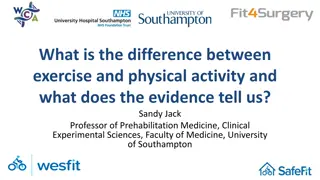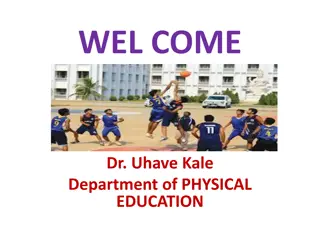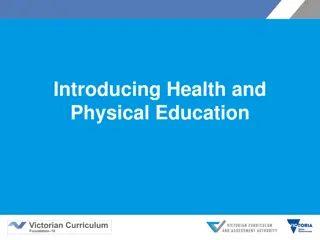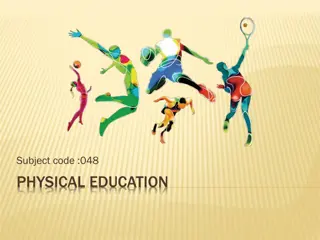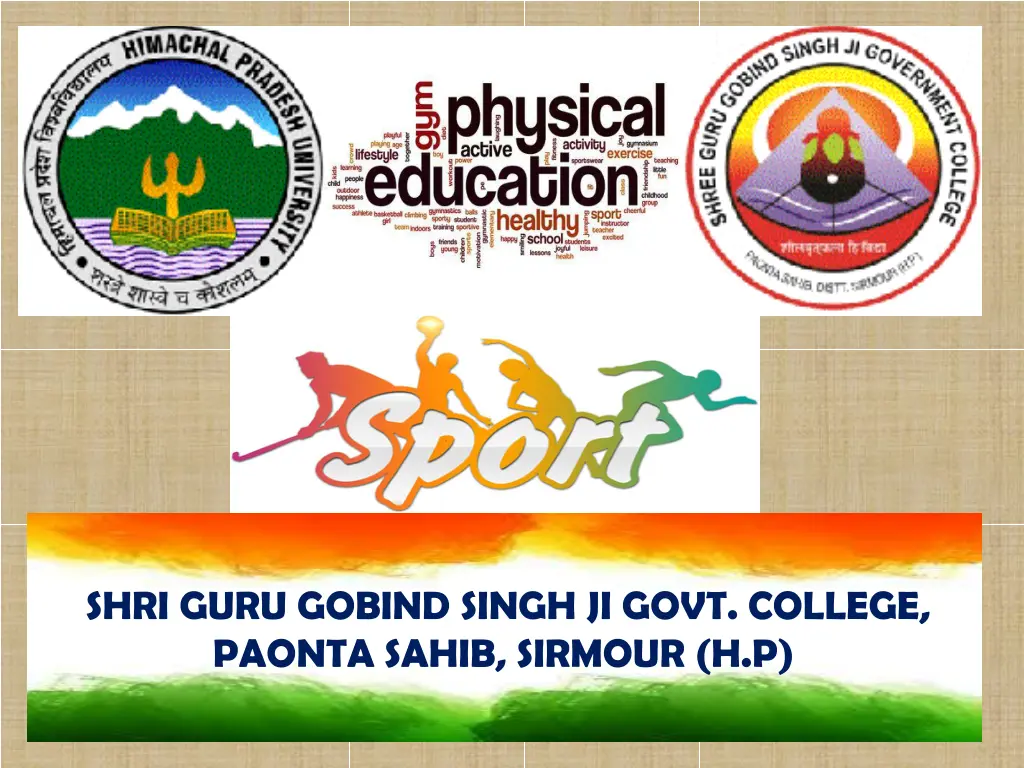
Importance of Physical Education in Total Development
"Explore the significance of physical education in fostering holistic student development, including physical competence, mental well-being, and emotional control. Discover the historical perspectives, aims, objectives, and definitions of physical education. Learn how physical activities contribute to personal growth and societal adaptation."
Download Presentation

Please find below an Image/Link to download the presentation.
The content on the website is provided AS IS for your information and personal use only. It may not be sold, licensed, or shared on other websites without obtaining consent from the author. If you encounter any issues during the download, it is possible that the publisher has removed the file from their server.
You are allowed to download the files provided on this website for personal or commercial use, subject to the condition that they are used lawfully. All files are the property of their respective owners.
The content on the website is provided AS IS for your information and personal use only. It may not be sold, licensed, or shared on other websites without obtaining consent from the author.
E N D
Presentation Transcript
SHRI GURU GOBIND SINGH JI GOVT. COLLEGE, PAONTA SAHIB, SIRMOUR (H.P)
B.A. 1ST YEAR COURSE NAME: INTRODUCTION TO PHYSICAL EDUCATION COURSE CODE: PED101TH
INTRODUCTION Physical Education is an integral part of the total education process. Physical Education has various aims and objectives to understand. In ancient Greece, much stress was laid down on Physical Education. Great philosophers like Socrates, Aristotle and Plato were of opinion that physical training is a must for youth. In ancient India, physical activities were the essential part of life. Changing Trends and Career in Physical education
DEFINITION According to Webster s Dictionary Physical education is a part of education which gives instructions in the development and care of the body rending from simple callisthenic exercises to a course of study providing training in hygiene, gymnastics and the performance and management of athletics games. Jackson R. Sharman points out that physical education is that part of education which takes place through activities, which involves the motor mechanism of human body which results in an individual s formulating behavior patterns.
Central Advisory Board of physical Education and Recreation defines Physical education as an education through physical activities for the development of total personality of the child to its fullness and perfection in body, mind and spirit. Charles A. Bucher defines physical education, an integral part of total education process, is a field of endeavor which has as its aim the development of physically, mentally, emotionally and socially fit citizens through the medium of physical activities which have been selected with a view to realizing these outcomes.
AIMS & OBJECTIVES The main objective of this education is to make all round development of the students. Its main goal is to develop the mental and intellectual development of the students. It is a means to prepare the students as a supporting element of society by which he can adjust with the society in future. Through this education, the art and quality of being healthy are explained to the students, because a healthy mind is formed in a healthy body. This education develops the emotional development of the students. It serves to bring control in their emotional aspects. This education is provided to develop the muscles of the students. With the help of which he remains active continuously
IMPORTANCE OF PHYSICAL EDUCATION Quality physical education programs are needed to increase the physical competence, health-related fitness, self-responsibility and enjoyment of physical activity for all students so that they can be physically active for a lifetime. Physical education programs can only provide these benefits if they are well-planned and well-implemented. Improved Physical Fitness: Improves children's muscular strength, flexibility, muscular endurance, body composition and cardiovascular endurance. Skill Development: Develops motor skills, which allow for safe, successful and satisfying participation in physical activities. Regular, Healthful Physical Activity: Provides a wide-range of developmentally appropriate activities for all children. Support of Other Subject Areas: Reinforces knowledge learned across the curriculum. Serves as a lab for application of content in science, math and social studies.
Self Discipline: Facilitates development of student responsibility for health and fitness. Improved Judgment: Quality physical education can influence moral development. Students have the opportunity to assume leadership, cooperate with others; question actions and regulations and accept responsibility for their own behavior. Stress Reduction: Physical activity becomes an outlet for releasing tension and anxiety, and facilitates emotional stability and resilience. Strengthened Peer Relationships: Physical education can be a major force in helping children socialize with others successfully and provides opportunities to learn positive people skills. Especially during late childhood and adolescence, being able to participate in dances, games and sports is an important part of peer culture. Improved Self-confidence and Self-esteem: Physical education instills a stronger sense of self-worth in children based on their mastery of skills and concepts in physical activity. They can become more confident, assertive, independent and self-controlled. Experience Setting Goals: Physical education provides children the opportunity to set and strive for personal, achievable goals.

